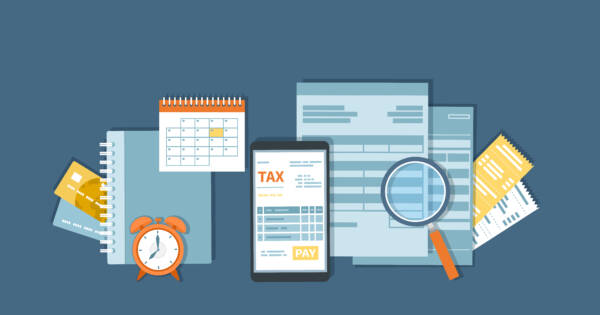Most people think of their investments in terms of gains and losses. Unfortunately, very little thought is given to the potential tax implications. That is, until the Internal Revenue Service (IRS) comes calling. (And they always do.) However, the reality is that taxes play a big factor in investment portfolios, both large and small. Your tax liability on money earned via investments plays a big part in how much you actually get to keep for yourself.
That’s why tax diversification is important for investors. With proper tax diversification, you can strategically spread out your tax risk. In the process, you can lower the total amount of taxes you owe to the government. Tax diversification also helps smooth out any sudden changes to the tax rates. In this article, we’ll discuss tax diversification and how it can help you make smarter money moves.
Definition Of Tax Diversification
Tax diversification, simply put, is the allocation of investment dollars into more than one account. It’s very similar to asset location, which refers to spreading investment dollars among various account types — and then choosing investment types that work best in those accounts.
The two basic types of investment accounts are taxable accounts and tax-deferred accounts. When you invest in taxable accounts, such as a regular brokerage account, the amount of money invested is not tax-deductible. It also doesn’t grow tax-deferred.
Instead, you’re taxed on any dividends you receive throughout the year. You could also have to pay capital gains tax, if an investment is sold at a price higher than it was purchased. With tax-deferred accounts, such as a 401(k), the money invested grows tax-free until it is withdrawn.
How It Works
Your investments are taxed at different times, depending on what they are. Tax diversification focuses on spreading out when you’ll be taxed on those investments. Since different types of investments are taxed in different ways, it helps to spread out those tax liabilities. It will give you more financial flexibility to spread out paying those taxes over a lifetime, instead of all at once.
Tax diversification becomes even more important as your wealth grows. The difference between a tax rates of 10% and 37% is much more obvious when dealing with hundreds of thousands of dollars (or millions) versus tens of thousands of dollars.
There are three basic categories of taxes that are applied to investments in the U.S. They are as follows:
Taxed Immediately
You are required to pay taxes immediately, on an annual basis, for certain types of holdings. These include investment brokerage accounts and checking/savings accounts, which may produce interest, dividends, realized capital gains and capital gains distributions.
These accounts are not sheltered from taxes at all. You’ll be required to pay taxes immediately to the federal (and possibly state) governments. These types of accounts offer very little tax benefit to investors, other than providing them with after tax dollars quickly.
 Shutterstock
ShutterstockTax Deferred
Some holdings only require you to pay taxes upon withdrawal or distribution of the assets. Popular types of tax deferred accounts are a 401(k) or 403(b) savings plan. It can also include when capital gains are realized, such as real estate transactions.
These types of accounts, notably a 401(k), enable your investments to grow tax free over extended periods of times. Gains and dividends can accumulate and help to grow the overall value of the account, without being subject to taxation. When you do finally withdrawal the money (ideally, in retirement), you will then be taxed on it. In theory, your tax rate will be much lower once you retire.
Tax Exempt
Some holdings almost never require you to pay income taxes on them. A prime example is a tax-free Roth IRA account. Other types of tax-exempt investments can include municipal bonds and certain types of specially designed life insurance.
In these type of accounts, you are investing invest after-tax dollars. That means the money is able to grow and be withdrawn tax free at a later date. Roth IRA and other tax-free investment accounts are the most beneficial to people managing their own investments and retirement planning.
Example Of Tax Diversification
A simple example of tax diversification is if you put all your retirement money into a 401(k) plan — a tax deferred account. You are pushing your tax obligations down the road until you retire, which will likely put you in a lower tax bracket. That means you’ll pay less tax on those savings than you would have during your working years.
However, you can actually achieve even more diversification by splitting your investments. Adding a Roth IRA, which is a tax-free investment account, will spread out your tax obligations even further. You’ll be paying tax on your income before you deposit some of it into your Roth IRA, meaning you can withdrawal it later without paying any more taxes. This can lower your overall tax obligation in retirement.
Tax Risks
Tax laws change frequently, both at the state and federal levels. As such, it can be difficult to know what the tax implications on investments will be in the future. At the risk of oversimplifying things, we’re saying that the rules could change at any time, depending on which politicians or parties win elections and what their tax policies are.
So there’s no reasonable way to know if your income bracket will change in the future, due to policy changes. As such, you should never assume that your tax rates will always be the same as they are today (assuming you make roughly the same amount of income). To help smooth out any unpredictable future changes in the tax code, make sure you’re diversifying your tax obligations.
 Shutterstock
ShutterstockTax Diversification Benefits
The benefits of tax diversification (spreading investment dollars across various accounts) are similar to those of portfolio diversification. The ultimate goal is simply to reduce your risk. For example, most people pay a long-term capital gains tax rate of 15% for investments in taxable accounts (the exact rate depends on your income, though).
For retirees who withdraw at least $40,526 throughout the 2021 tax year ($81,051 for married couples filing jointly), this tax bracket rate would be at least 22%. In this scenario, people would get the most out of tax deferral by leaving their 401(k) and traditional IRA money untouched.
Allowing money in tax deferred accounts to grow as long as possible (without withdrawing) is the best strategy. In retirement, it’s best to withdraw money from taxable accounts and tax-free Roth IRAs first. Then withdraw from tax-deferred accounts last.
Importance Of Flexibility
Investors may need to withdraw more money than usual in some years. For example, maybe the funds are needed for a home repair, medical expense, unexpected travel, or to help out children (or grandchildren) financially. A big withdrawal from an IRA or 401(k) could lift you into a higher tax bracket for the year.
It’s important to remember that all withdrawals (except those from a tax-exempt account) count towards your annual income. That means that staying flexible is important. If a big withdrawal is needed, it might make more sense to take money from a tax-free Roth IRA account. If you parked 100% of your retirement money into a 401(k) plan, though, that won’t be possible.
Other Issues
There are some additional issues to be aware of when it comes to tax diversification. For example, a Roth IRA is more beneficial to your heirs than a 401(k) or traditional IRA. For this reason, you may want to leave that account alone to be distributed by your estate (unless you desperately need the funds).
Since nobody truly knows what the tax rates on different assets or accounts will be in the future, it’s important to keep your options open. Try to spread your retirement investments around in different types of accounts. It’s the best way to minimize your tax obligations over the long-term. When done right, it will ensure you get to keep a larger percentage of your money.
The Bottom Line
No one can predict where tax laws will be in the future — especially decades from now. Investors should therefore think about all the possible taxation scenarios in retirement before making long-term decisions on the types of accounts to invest in.
It’s important to consider the chances of being in a higher or lower tax bracket once your retire. Then invest accordingly, to reduce the amount of taxes you might owe. If you’re not sure what tax bracket you’ll end up in once you stop working, make sure you spread your assets across a few different account types. That way, you can withdrawal from the one that costs you the least in taxes when you need it. If you need help, ask your accountant (or preferred financial professional) about the best strategies for tax diversification.
 Shutterstock
Shutterstock







